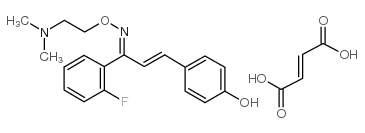Activation of slowly conducting medullary raphe-spinal neurons, including serotonergic neurons, increases cutaneous sympathetic vasomotor discharge in rabbit.
Youichirou Ootsuka, William W Blessing
Index: Am. J. Physiol. Regul. Integr. Comp. Physiol. 288(4) , R909-18, (2005)
Full Text: HTML
Abstract
Neurons in the rostral medullary raphe/parapyramidal region regulate cutaneous sympathetic nerve discharge. Using focal electrical stimulation at different dorsoventral raphe/parapyramidal sites in anesthetized rabbits, we have now demonstrated that increases in ear pinna cutaneous sympathetic nerve discharge can be elicited only from sites within 1 mm of the ventral surface of the medulla. By comparing the latency to sympathetic discharge following stimulation at the ventral raphe site with the corresponding latency following stimulation of the spinal cord [third thoracic (T3) dorsolateral funiculus] we determined that the axonal conduction velocity of raphe-spinal neurons exciting ear pinna sympathetic vasomotor nerves is 0.8 +/- 0.1 m/s (n = 6, range 0.6-1.1 m/s). Applications of the 5-hydroxytryptamine (HT)(2A) antagonist trans-4-((3Z)3-[(2-dimethylaminoethyl)oxyimino]-3-(2-fluorophenyl)propen-1-yl)-phenol, hemifumarate (SR-46349B, 80 microg/kg in 0.8 ml) to the cerebrospinal fluid above thoracic spinal cord (T1-T7), but not the lumbar spinal cord (L2-L4), reduced raphe-evoked increases in ear pinna sympathetic vasomotor discharge from 43 +/- 9 to 16 +/- 6% (P < 0.01, n = 8). Subsequent application of the excitatory amino acid (EAA) antagonist kynurenic acid (25 micromol in 0.5 ml) substantially reduced the remaining evoked discharge (22 +/- 8 to 6 +/- 6%, P < 0.05, n = 5). Our conduction velocity data demonstrate that only slowly conducting raphe-spinal axons, in the unmyelinated range, contribute to sympathetic cutaneous vasomotor discharge evoked by electrical stimulation of the medullary raphe/parapyramidal region. Our pharmacological data provide evidence that raphe-spinal neurons using 5-HT as a neurotransmitter contribute to excitation of sympathetic preganglionic neurons regulating cutaneous vasomotor discharge. Raphe-spinal neurons using an EAA, perhaps glutamate, make a substantial contribution to the ear sympathetic nerve discharge evoked by raphe stimulation.
Related Compounds
| Structure | Name/CAS No. | Molecular Formula | Articles |
|---|---|---|---|
 |
Eplivanserin hemifumarate
CAS:130580-02-8 |
C23H25FN2O6 |
|
Nest building is impaired in the Ts65Dn mouse model of Down ...
2014-12-01 [Neurobiol. Learn. Mem. 116 , 162-71, (2014)] |
|
Role of serotonin (5-HT)2 receptors in cocaine self-administ...
2005-01-01 [Pharmacol. Rep. 57(1) , 35-46, (2005)] |
|
The role of serotonin-2 (5-HT2) and dopamine receptors in th...
2011-02-01 [Psychopharmacology 213(2-3) , 393-401, (2011)] |
|
Anxiolytic-like effect of milnacipran in the four-plate test...
2005-07-01 [Pharmacol. Biochem. Behav. 81(3) , 645-56, (2005)] |
|
Regulation of striatal neuropeptide mRNAs: effects of the 5-...
2002-01-01 [J. Neurosci. Res. 67(1) , 86-92, (2002)] |